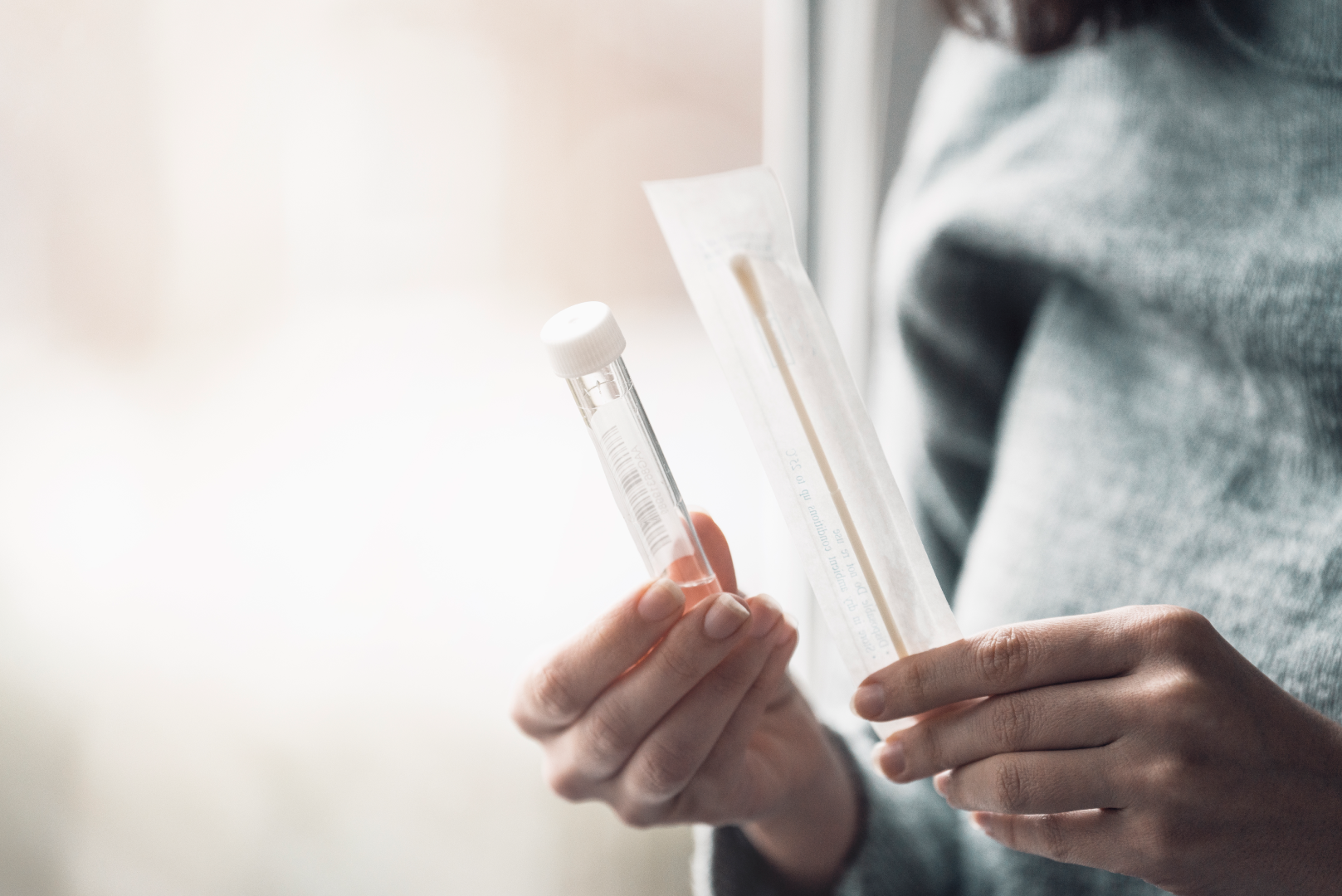
Self-testing for STIs makes prioritizing your sexual health feel easier and more convenient. Find out about the different types of self-testing available, where to find services, and what to do if you get a positive result.
What is a self-test?
A self-test is a test you can take at home or in a private space on your own time. There are self-tests for many different health concerns. In this resource, we’ll specifically focus on HIV and STIs.
Self-tests are a little different than the tests you may have taken in the past with your medical provider, at a clinic, or at a testing event. You may have had providers take blood from a vein in your arm or hands and swab your mouth or genitals. Self-tests may include swabs you take yourself, fingerstick blood tests, and saliva tests.
In the U.S., you can access self-testing for STIs via TakeMeHome, as well as specific HIV testing. In other locations, you can find self-testing resources via BHOC’s global directory (or check with your local healthcare provider or sexual health organization).
How do I take a self-test?
It’s extremely important to read the detailed instructions that come with your self-test. Most self-tests involve you collecting a blood sample and body part-specific samples, like swabs and urine samples.
Swabs and urine samples: Keep in mind that you should “test where you play.” This means that you’ll want to test any body parts you’re using during sex. Here’s what is recommended to test using swabs and urine samples:
- Use an anal swab if you’re receiving oral or penetrative anal sex.
- Take a urine sample if you have a penis and penetrate others vaginally, anally, or orally.
- Swab your throat if you give oral sex to anyone regardless of body part.
- Take a urine sample or swab your vagina if you receive oral or penetrative sex.
With most providers, you’ll take these tests on your own, then send the samples to a lab in the mail and get results on a secure portal just days later.
Blood tests: Self-tests that use blood are looking for systemic infections that show up in your blood. These are typically STIs like HIV, hepatitis C, and syphilis. Many home blood tests use a fingerstick (lancet) for you to draw blood and drop it on a small card to send to a lab. In the U.S., you can access free HIV self-testing from Together TakeMeHome, a program funded by the CDC, here.
For HIV specifically, there are additional types of self-tests available:
- OraQuick is an antibody test that you take at home, available in the U.S., U.K., Spain, Germany, Italy, France, and Portugal. It can test oral fluid (saliva) samples in addition to blood samples. For the oral test, you swab your gums and get results in 20 minutes! Because it is an antibody test, it may not detect early HIV infection (in other words, people who have been infected in the previous 3 months). Up to 1 in 12 people may receive a false negative result (which means that even if the test says they’re negative, they’re actually HIV-positive) with this test. This means it’s very important to get confirmed by additional testing in a clinical setting.
INSTI is an antibody test you can take at home, available in the U.S., Canada, and Europe. It requires a fingerstick and a drop of blood. For this test, you clean your finger with an alcohol wipe, stick your finger with a provided lancet, and drop your blood into a bottle of medical solution. You shake that bottle and then pour it along with two other bottles of solution into a provided testing device. You get your results 1 minute later. This test has a higher degree of accuracy. You can find more information about HIV tests on the CDC website.

Where can I get self-tests?
Self-test programs—including free and low-cost ones—are quickly growing! See this global list of testing services, including ones with self-test options.
If you’re in the U.S. specifically, check out TakeMeHome (HIV and STI testing) and Together.TakeMeHome.org (HIV testing only). Both programs are free to use, and send self-test kits in a discreet package directly to you.
Elsewhere, check with your local healthcare provider or sexual health organization.
How accurate are self-tests compared to what I get at a clinic?
When it comes to seeing if self-tests will give you the most accurate result, it’s important to understand how your sex life may play a role. All HIV and STI tests have a “window period,” which is the time from when someone got an infection until the time the test is able to detect the infection. If you had sex last week, most HIV tests (even ones you get at a clinic) wouldn’t be able to detect HIV in your body yet.
Additionally, most common STIs don’t show symptoms, like a new rash, discharge, or pain when using the bathroom. This means that there are certain STIs that you could have for a long period of time and not know it.
This is why frequent testing is incredibly important, especially if you’re sexually active or sharing drug use supplies. The CDC recommends that you test every 3 to 6 months to get an accurate understanding of your health, including if you need to start treatment for HIV or other STIs.
Some self-tests have a higher likelihood of showing a false positive, meaning that you might get a positive result but actually not have the infection—so it’s recommended to follow up with a clinic visit.
What happens if I get a positive result on a self-test?
Getting a positive test result can bring up a mix of emotions. Take a deep breath. It’s important to take care of yourself and reach out to get support and treatment.
During this time, you also want to inform any sexual partners so they can get tested. Here are some tips on telling someone about your positive result.
When you’re ready, go see a healthcare provider for additional testing to confirm the positive result and start treatment if necessary. In the U.S., you can find a sexual health clinic on the CDC website. In other locations, you can find resources in BHOC’s global directory. Elsewhere, check with your local healthcare provider or sexual health organization.
HIV/STI testing reminders
Some clinics and testing services may send out testing reminders. You might also want to set an alert or reminder for yourself—on your phone, or in your calendar—so that you remember to get tested every 3 to 6 months. That way, it’ll feel like a quick and simple part of your routine.
For more information on sexual health, take a look at our guide to prioritizing sexual health and safety.


